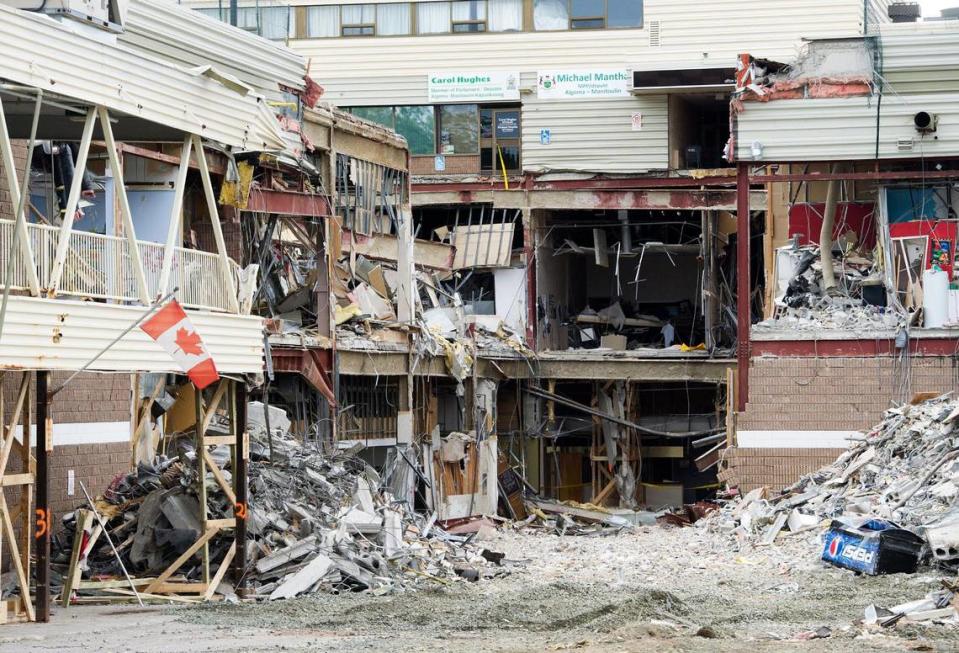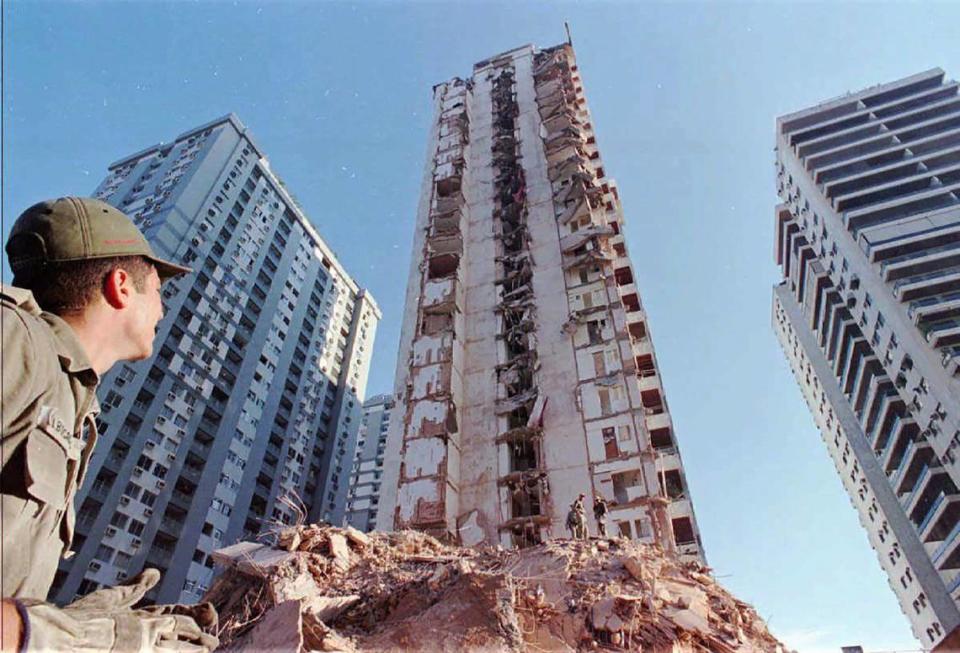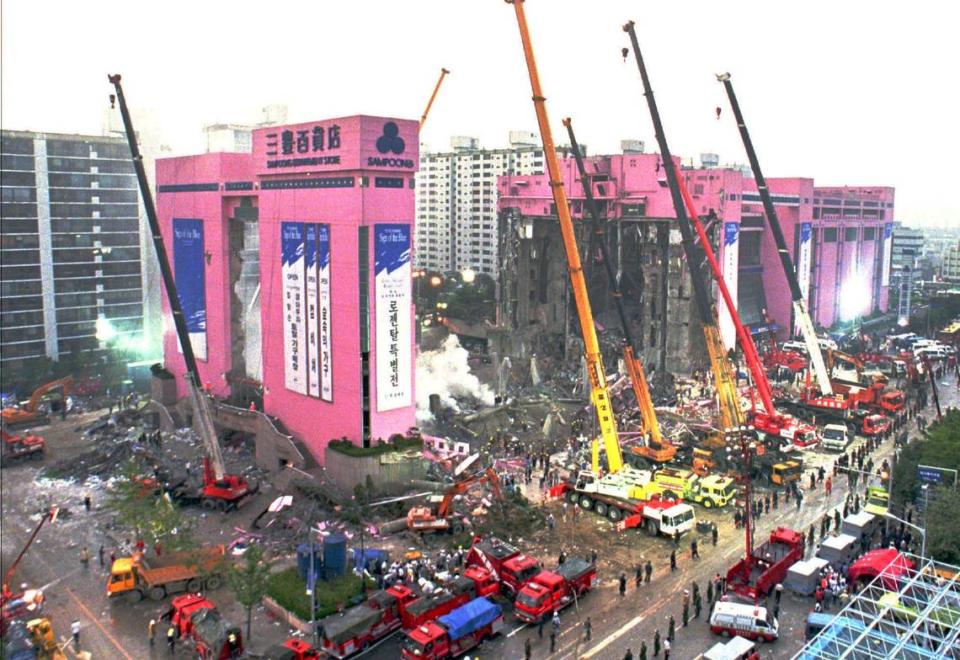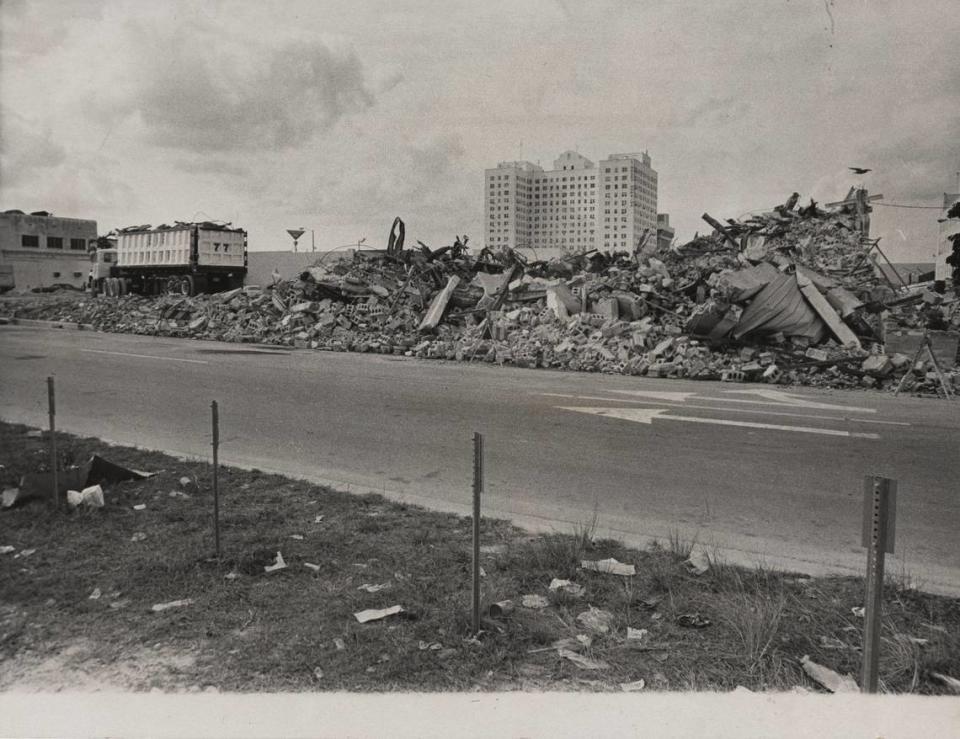Have buildings spontaneously collapsed before? Yes, but it’s a short list
Investigators from around the world have flown in to try to explain the sudden, middle-of-the-night collapse of a nice enough, but largely unremarkable luxury condo building, one that stood for several decades before collapsing but wasn’t nearly as old as some nearby buildings that still stand. It’s nearly unprecedented mystery that experts are struggling to explain.
“It’s really rare to have this kind of failure that a building is doing all well and all of the sudden it just collapses,” said Mohammad Ehsani, engineer and concrete-shoring expert. “It’s not something that should happen or does happen.”
It seems hyperbolic to say “40-year-old buildings don’t just collapse” but it’s not.
Kevin DuBrey, the director of project management at Hillman Engineering in Fort Lauderdale — which has conducted 40-year inspections at other buildings — could not think of any other example of a building that seemed largely okay one day, completely failing the next with no obvious reason like an earthquake.
“I’ve never seen a half a building just collapse — not that was occupied,” DuBrey said. “This was not a condemned building.”
The Herald reviewed Wikipedia’s crowdsourced list of over 300 structural failures around the world since the start of the 20th Century. Most were bridges, wind turbines, parking garages and TV/cell towers — not buildings.
The buildings that were on the list tended to share some of the following characteristics: Most collapses were localized to balconies, decks, roofs, mezzanines or only a few floors. The more severe cases were usually caused by earthquakes, blizzards, floods or other natural disasters. A few collapsed due to fires and gas explosions. Less frequently, buildings were brought down by an act of terrorism.
Some were used for purposes the structure could not support. Among the worst examples were unlicensed factories in Bangladesh and Egypt that had been converted from commercial to industrial use without proper shoring up of support columns. And if it wasn’t any of the other reasons, buildings that caved in tended to be newly built, under construction, or were already condemned and scheduled for demolition at the time of collapse.
None of that seems to apply to the Champlain Towers South condo in Surfside. Given the limited evidence publicly available, experts now say it likely collapsed due to a “perfect storm” of random events combined with severe degradation of structural concrete.
The Herald found only a handful of similar examples in modern history:
Algo Centre Mall, Canada (2012)
On June 23, 2012, part of a parking garage at Algo Centre Mall in Elliot Lake, Ontario collapsed into the shopping center below, killing two women. In the years prior to the collapse, employees noticed frequent roof leaks, according to coverage of the trial by the Canadian Broadcasting Channel.
The investigation found that failed waterproofing, which was also documented in Champlain Towers South during a 2018 inspection. At Algo Centre mall, investigators found saltwater incursion led to corrosion of a key steel support beam.
Unlike Champlain Towers South, the Algo Mall collapse happened during the day when the parking garage was full of cars.

According to a report in engineering.com: “The roof collapsed when one car too many parked on the rooftop parking lot. Investigators say that the car was the final straw to break the unstable roof. Although the roof had been leaking for quite a while, prior inspection failed to detect the concrete and steel corrosion in the structure.”
A public inquiry into the collapse chalked it up to “human failure”— cursory inspections that failed to detect the extent of the damage and a lack of transparency meant many people were unaware of the damage that was found.
When he presented the findings to the community, Justice Paul Belanger concluded: “if any one of the owners, engineers or officials who were involved with the mall over its 33 years of existence had insisted: ‘enough … this building will fail if it isn’t fixed,’ two lives would not have been senselessly and tragically lost.”
Palace II, Brazil (1998)
The Palace II, a nearly new, 22-story residential highrise in a posh neighborhood of Rio de Janeiro partially collapsed Feb. 22, 1998, killing eight people. Five days later, another part of the structure came down.
Unlike Champlain Towers, which eyewitnesses say came down with almost no warning, at Palace II residents had hours of warning. Most residents evacuated after feeling the building shake just hours before the collapse, according to reporting by the Chicago Tribune. Those who died had run back in to collect clothes and other belongings.
The BBC reported that the building did not have proper permits.

“Investigators found exposed steel rods corroded by sea salt and crumbling concrete full of sea shells, evidence the builders had used seawater and sea sand to make cheap cement that violated building codes,” the Tribune reported. Mixing sea water into concrete was also a common, although illegal, practice in 1980s Miami construction. Experts told the Herald that mixing sea water into concrete creates an especially corrosive environment, weakening the steel rebar intended to reinforce the concrete.
The Palace II was built by Sergio Naya, a multimillionaire congressman, who faced hundreds of lawsuits over shoddy construction work. At the time, he had a project in Orlando, Florida.
Sampoong Department Store, South Korea (1995)
The nine-story Sampoong Department Store that collapsed on June 29, 1995, in Seoul was only six years old when an air conditioning unit crashed through the fifth-floor roof, triggering the failure of support columns. More than 500 people died in the resulting catastrophic collapse, making it one of the deadliest in history.
According to a case study published by the University of North Carolina in Charlotte, the collapse looked similar to a controlled demolition — something many experts have also said about the way the Surfside building caved in.
The department store was originally slated to be a four-story residential building requiring the removal of certain structural columns to make space for escalators, according to a history of the building and its collapse published in the Guardian. Extra stories were added to the original design, stressing the building’s structural columns, the UNC case study said. Anyone from engineers to contractors who opposed developer Lee Joon’s vision was fired and officials bribed. Joon was later found guilty of criminal negligence.
Faulty design and poor construction were blamed for the collapse, according to an archive of the Seattle Times article from the sentencing.

Prior to the collapse, there were signs of danger. Huge cracks in a concrete slab around a fifth-floor column were rapidly widening and hours before the collapse, executives were evacuated from the building, according to Public Safety, a blog about infrastructure and safety. But shoppers were left inside unaware of the danger, as management worried about the revenue loss that would occur from closing the building during peak shopping hours.
The mall, a reinforced-concrete structure, was built using a common technique called “flat slab construction” where the structural slab sits directly on top of the support column. (Champlain Towers South was built the same way).
The construction is prone to a type of failure called “punching shear” where — if concrete is weakened or not properly reinforced — a column can poke through a slab, causing a rapid collapse. Investigators found the mall’s columns were too narrow, increasing the risk of punching shear failure, according to the Public Safety report.
A few years before the collapse, several heavy air conditioning units were relocated by dragging them across the fifth-floor roof and causing cracks that widened each time the air conditioning was turned on. Eventually, vibrations caused the slab to break and the column punched through, causing a pancaking collapse, according to Project Safety.
Drug Enforcement Agency Building, Miami (1974)
Six people died on Aug. 5, 1974, when the roof of a federal office building in Miami caved in on the offices below. At the time, Miami Fire Chief Don Hickman speculated that too many cars had overloaded the rooftop garage and caused it to collapse part of the building, which housed the Drug Enforcement Administration, according to news articles from the time.

“Later, it was found that the resurfaced parking lot, coupled with salt in the sand, had eroded and weakened the supporting steel structure of the building,” according to an article published by the DEA. According to the article, the building had undergone a full inspection prior to the agency moving into the building.
The collapse, which shares little in common with Champlain Towers South other than general proximity, prompted the implementation of the mandatory 40-year re-certification for buildings in Miami-Dade County that Champlain Towers South was undergoing at the time of collapse.

